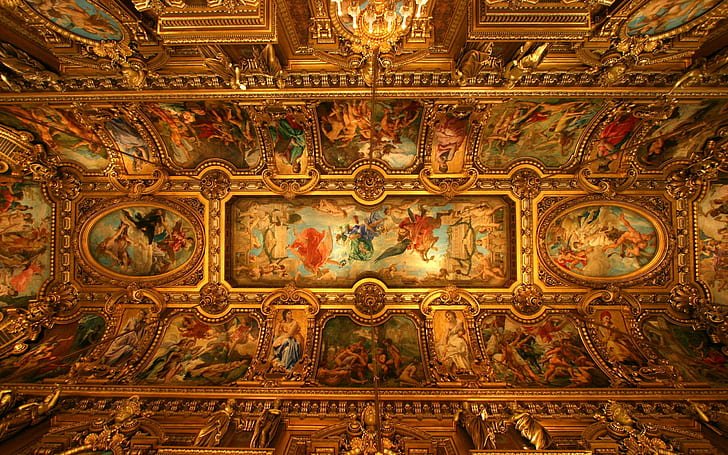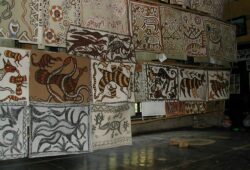The Sistine Chapel Ceiling: Michelangelo’s Masterpiece
 Posted On
Posted On
The Sistine Chapel in Vatican City is one of the most renowned artistic treasures in the world, and at the heart of its splendour lies the iconic ceiling painted by the genius of the Renaissance, Michelangelo Buonarroti. This magnificent masterpiece, completed between 1508 and 1512, stands as a testament to human creativity, skill, and dedication. The Sistine Chapel ceiling painting is a breathtaking example of the power of art to transcend time and capture the essence of the human spirit.
Michelangelo was initially reluctant to undertake the monumental task of painting the Sistine Chapel ceiling. He was primarily a sculptor and had little experience with fresco painting, the technique required for this massive undertaking. However, under the commission of Pope Julius II, he embarked on this ambitious project that would come to define his legacy.
The ceiling, covering an area of approximately 5,800 square feet, is divided into nine main panels. These panels are interconnected by a series of architectural elements that create a sense of unity and continuity. The central panel features the “Creation of Adam,” one of the most famous and recognizable images in the history of art. In this iconic scene, the outstretched hands of God and Adam are separated by a mere touch, symbolizing the divine spark breathed into humanity.
Michelangelo’s work is a testament to the painstaking effort and precision that went into its creation. He had to work on the scaffolding for years, lying on his back to paint the ceiling. Despite the physical and mental challenges, he meticulously rendered each figure and scene. The details are staggering, and the artistry is unparalleled. The complexity of the composition is a reflection of Michelangelo’s unparalleled talent and his keen understanding of human anatomy and movement.
One of the remarkable aspects of the Sistine Chapel ceiling is its multifaceted symbolism. Each panel tells a story from the Bible, from the creation of the world to the salvation of humanity. These stories, portrayed in vivid color and intricate detail, serve not only as religious narratives but also as a testament to the power of art to communicate complex ideas and emotions.
The Sistine Chapel ceiling also showcases Michelangelo’s artistic evolution. While the earlier panels are more conservative and classical in style, the later ones display a profound shift towards a more expressive and dynamic approach. The “Last Judgment,” which Michelangelo painted on the altar wall of the chapel between 1536 and 1541, is a prime example of this evolution. In this work, he explores the human form with an unprecedented intensity and emotional depth.
The enduring legacy of the Sistine Chapel ceiling is not limited to its artistic brilliance. It has served as an inspiration for countless artists and continues to be a symbol of the Renaissance’s cultural and artistic zenith. The use of chiaroscuro, the interplay of light and shadow, and the remarkable ability to convey human emotions through the painted figures all contribute to its timeless appeal.
Moreover, the Sistine Chapel ceiling has been a site of religious significance for centuries. It is the backdrop for the papal conclave, where the College of Cardinals gathers to elect a new Pope. The spiritual significance of the chapel, combined with the breathtaking artistry of the ceiling, creates a sense of awe that transcends artistic appreciation.
In conclusion, the Sistine Chapel ceiling is a testament to the indomitable spirit of human creativity and artistic genius. Michelangelo’s work, with its intricate details, emotional depth, and profound symbolism, continues to captivate and inspire people from all walks of life. It is a masterpiece that reminds us of the power of art to elevate the human spirit and communicate the most profound and enduring truths of the human experience. The Sistine Chapel ceiling remains an enduring symbol of artistic excellence and spiritual significance, a masterpiece that will continue to inspire and awe generations to come.



